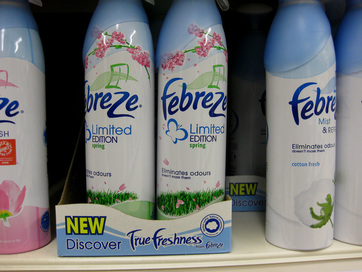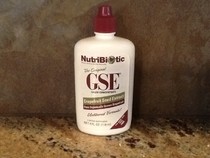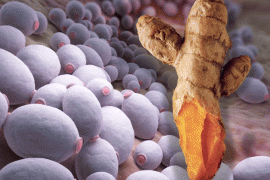I recently moved and was looking for a doctor closer to home. On my first new patient visit I entered the office and was a little overwhelmed with a strong combination of fragrances. Then I thought perhaps it was just a scent from someone else’s perfume or cologne as there were two others in the waiting area. As I waited to see the doctor and 30 minutes had passed, I began to think the smell wasn’t so strong. This is a typical response to any smell or fragrance. Upon entering an area with a “smell” the body initially recognizes the odor as strong, but as time passes and the smell fills the nostrils and in the case of chemical man made scents, as the oils coat the mucous membranes of the nasal passages the smell seems to diminish. So I waited for my time with the doctor. As a nurse walked me to his office, I was astonished to see three cans of Febreze air freshener on the counter in a hallway. As I sat waiting for the doctor in his office I began to wonder what I was doing, the longer I sat there the greater my exposure and the worse I would feel, so I got up and left. I did explain to the receptionist why I was leaving and have followed up to the D.O. with a letter about why I didn’t keep my appointment.
So why would I be surprised at seeing air freshener? I guess I expect more from doctors today, especially those in a more open minded profession, such as D.O.’s, Chiropractors, etc. As someone with environmental illness I am all too aware of the hazards of air fresheners. Let’s also remember that if you’re going to the doctor, most likely it’s because you are ill, so do you want to be exposed to something that can contribute to other illness and trigger asthma attacks? If you are going to a doctor’s office because you want to be healthy, why would you go to an unhealthy environment?
I know some of you are thinking that they air fresheners smell wonderful, and that they eliminate odors. But that’s actually not true. They do not eliminate odors, they simply cover them up with a stronger scent, once the scent wears off, the original odor you were trying to get rid of is still there. Unless of course you opened a window to let in some fresh air. If you watch TV, you are always bombarded with commercials about air fresheners, in every size, shape and form you can imagine, aerosol sprays, candles, car clips, plug- ins, and solids. I know you’re thinking that air fresheners are safe to use and have a wonderful scent, but do you know what’s in air fresheners?
It’s certainly hard to know, even if you read labels, as they are misleading. If you read a Febreze label you’ll see the following ingredients listed: Odor eliminator, water, fragrance, non-flammable natural propellant, quality control ingredients. No CFC’s and contains no phosphates. However according to a report done by the Environmental Working Group (EWG) on Febreze Air Effects there are 89 air contaminant chemicals Proctor and Gamble failed to list on their label. Febreze Air Effects is only one Febreze product and the fact that they would disclose so little information about the ingredients is hazardous to everyone’s health. It’s also a safe assumption that their other products are just as hazardous.
Here are some of the chemicals EWG found in their testing of Febreze Air Effects, listed in order of their toxicity to humans:
•BHT – Known as a neurotoxin, endocrine disruptor, immunotoxicity, non-reproductive organ system toxicity, skin eye and lung irritator
•Acetaldehyde – Known to cause cancer, toxic to reproduction and development, immunotoxin, non-reproductive organ system toxin, skin, eye and lung irritator
•”Fragrance” – One of the few ingredients actually disclosed, it’s a neurotoxin, immunotoxin and allergen
•Propylene Glycol – Causes cancer, allergies, toxic to immune system, accumulates in the system, non-reproductive organ system toxin, is classified with “enhanced skin absorption” and irritates the skin, eye and lung
•1,3-Dichloro-2-propanol – Carcinogenic (causes cancer)
•Limonene – Allergen, immunotoxin and skin, eyes and lung irritator
•Methyl pyrrolidone – Toxin to reproduction and development, allergen and immunotoxin, non-reproductive organ system toxin and skin, eyes and lung irritator
•Alcohol denatured – Also disclosed in the ingredients of Febreze, it’s linked to cancer, developmental/reproductive toxicity, organ system toxicity and skin, eyes and lung irritator
•Butylphenyl methylpropion al – allergen, immunotoxin and skin, eyes and lung irritator
•Ethyl acetate – linked to developmental/reproductive toxicity, neurotoxicity, organic system toxicity and skin, eyes and lung irritator
•Geraniol – Linked to allergies, immunotoxicity, organi system toxicity and and skin, eyes and lung irritation
•Linalool – allergen, immunotoxin, and and skin, eyes and lung irritator
•Benzaldehyde – neurotoxin, and skin, eyes and lung irritator
•Diethylene glycol monoethyl ether – non-reproductive organ system toxicity
•Ethylhezanol – developmental and reproductive toxin and skin, eyes and lung irritator
•Hexyl cinnamal – allergen, immunotoxin and skin, eyes and lung irritator
If this article is concerning to you, or if your doctor, healthcare facility or hospital uses air fresheners, share your concern and direct them to EWG research findings at the link below.
Click here for the full report.








